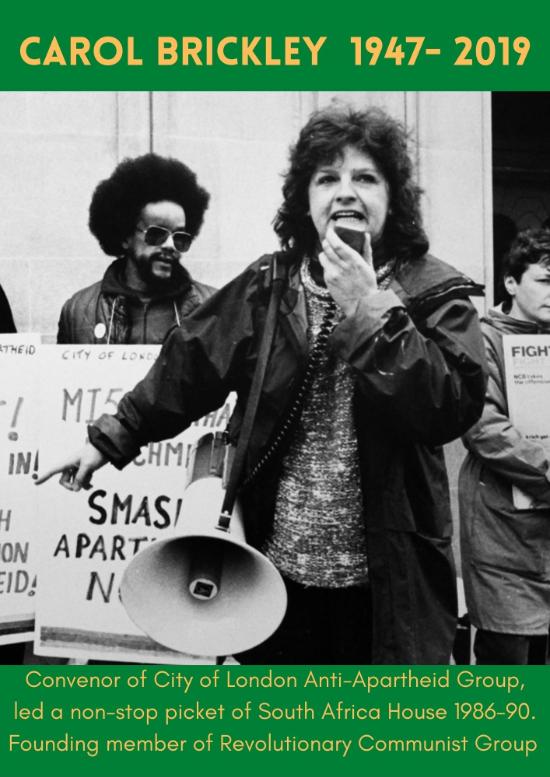Sylvia Pankhurst 1882 – 1960
Sylvia Pankhurst, one of the daughters of the leading British suffragette Emmeline Pankhurst, is frequently airbrushed from bourgeois history because of her revolutionary politics. As part of the militant wing of the Women’s Social and Political Union, Sylvia participated in direct action that saw suffragettes smash windows, set buildings on fire, invade government meetings and cause as much disruption as possible. She, like many suffragettes was repeatedly imprisoned and subjected to violent force feeding to prevent hunger strike. However, Sylvia came to question the value of these exemplary actions for working class women, and began to take a broader, class-based approach to the question of women’s liberation.
Sylvia developed strong anti-imperialist politics, first opposing British oppression in Ireland, its oldest colony. In 1913 working class organisation was growing in Ireland under the leadership of James Larkin, James Connolly and the Irish Transport and General Workers Union who went on strike to fight against unemployment, for an 8-hour day and for nationalisation of transport. In response the Dublin employers organised a lock out in 1913, preventing any union members or supporters from working, aiming to break the trade union. The Irish transport union called for political solidarity. Though some sections of British workers answered the call – with the Liverpool railway workers striking – the British TUC pressured any sympathy strikes to get back to work and instead sent food aid. The food was welcome but was no replacement for decisive solidarity action. The strike was eventually lost, with the Irish transport union and Larkin being condemned by the official British TUC and Labour Party. This was an important lesson for Sylvia.
Sylvia spoke at a mass meeting in London supporting Larkin and the Irish workers. For this, she was expelled from the WSPU. She created the East London Federation of Suffragettes in 1912, organising with working class women to provide communal nurseries and canteens, mounting rent strikes and publishing her newspaper The Women’s Dreadnought which later became The Workers’ Dreadnought. When world war broke out in 1914, Sylvia and the East London Federation of suffragettes campaigned for peace and opposed conscription. In contrast the WSPU made a truce with the government to support the war drive and help with recruitment. Sylvia was key to organising the First International women’s peace conference in 1915 in Holland, though she was banned from travelling to it.
Sylvia supported the Irish 1916 Easter rising in Ireland. The rebellion was defeated within a week, its leaders – including James Connolly – arrested and executed. In a full-page article, The Woman’s Dreadnought declared its support for the right of the Irish people to self-determination. It was the most principled statement by a British socialist at a time of great anti-Irish propaganda. Sylvia opposed the Labour Party, whose MPs led the applause in parliament on the news that the rebellion had been put down and Connolly shot. Sylvia stood against British colonialism and intervention in Ireland, taking the side of national liberation.
In 1919 Sylvia worked with the ‘Hands off Russia’ campaign to stop the blockade and invasion of Russia which saw 14 countries attack the Bolshevik revolution – as a result she was imprisoned for six months.
In the run-up to Italy’s invasion of Ethiopia in 1935, Sylvia Pankhurst denounced the attack and campaigned for Africa’s last uncolonised country to remain free. She produced a new newspaper New Times and Ethiopia News, publishing information and reports about the resistance of Ethiopian patriots, obtained from correspondents in neighbouring Djibouti, Kenya and Sudan. Several editions in Amharic, the Ethiopian national language, were smuggled into Italian-occupied Ethiopia. The Italian invasion of was finally defeated in 1941 thanks to the determined resistance of Ethiopian rebels. Sylvia spent much time travelling in Ethiopia and Eritrea and reporting on colonialism. She moved to Ethiopia in 1956, setting up a journal – the Ethiopia Observer – which supported Ethiopian independence and struggles against colonialism. She visited Kenya in 1958 and rallied in support of the Mau Mau rebellion, brutally crushed by Britain. She organised and fundraised for hospitals and social support programmes in Ethiopia. She died in 1960 at the age of 78 and is buried in front of Addis Ababa’s main cathedral with patriots of the Ethiopian resistance.
(see https://www.revolutionarycommunist.org/culture/2507-communist-internationalist-and-fighter-for-womens-rights)





